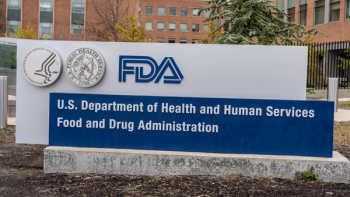
- Pharmaceutical Executive: July/August 2024
- Volume 44
- Issue 7/8
From Potential to Value: Carving a Slice of the CGT ‘PIE'
The importance of pre-approval information exchange (PIE) with payers and other strategic considerations to help navigate today’s market access challenges and regulatory requirements in bringing promising cell and gene therapies to the market.
On January 15, 2019, FDA’s then-commissioner, Scott Gottlieb, MD, predicted that, by 2025, the agency would be approving 10 to 20 cell and gene therapies (CGTs) per year.1 In the ensuing five-plus years, the CGT sector has experienced tremendous growth—headlined by a record-breaking seven CGTs receiving FDA approval in 2023.
As we approach 2025, the industry appears on track to hit the FDA’s projection. We could see as many as 10 regulatory decisions in the US this year, and with about 2,000 CGT clinical trials underway globally,2 the figure is poised to climb in the coming years.
While the positive trajectory—and growing pipeline—offers tremendous potential, the path from discovery and development to commercialization is complex and lined with challenges that can impact product success and patient access.
ENGAGE PAYERS EARLY—AND CONSISTENTLY
CGTs introduce unique considerations and challenges, including those related to patient access, regulatory requirements, and market access.
Payers, for example, face several questions when evaluating CGT products, including how to balance the potential long-term clinical value with the cost of the therapy and uncertainty regarding long-term durability at the time of regulatory approval.
The lingering questions among payers underscore the importance of both engaging payers early and demonstrating the product’s value, including its durability, safety, and efficacy.
However, CGT developers—particularly pre-commercial biopharma companies—often have more limited experience and fewer resources than larger pharmaceutical companies and might not be as familiar with how to engage payers.
Developers can initiate that process by engaging in market research with payers in a variety of manners to gain feedback on the target product profile, evidentiary needs, value proposition, and even sequence of launch by indication where applicable for multi-indication brands. The output of the market research will help inform clinical trial design, endpoint selection, and proactive commercial planning if the research is conducted early enough in the product lifecycle.
Following the initial communication, developers should consider engaging in pre-approval information exchange (PIE) with payers, which allows them to share information, such as company overviews where applicable, background on disease state, product and indication overview, patient use projections, clinical study results, and pricing information.
According to research led by a team of experts at Cencora and presented at Academy of Managed Care Pharmacy 2024,3 60% of payers surveyed said they prefer information on CGT therapies greater than six months prior to the anticipated regulatory approval—with 16% saying they prefer to receive the information more than a year ahead of the decision.
When designing their PIE engagement strategy, developers should consider leveraging traditional personal channels as well as digital channels to communicate product-related information. For example, Cencora’s FormularyDecisions4 is a secure online platform that facilitates information exchange between vetted payers and developers. CGT developers that may not have field teams established yet can outsource payer account teams to engage in PIE on their behalf.
The insights gleaned from the early conversations with payers will help biopharma companies develop an evidence package that showcases the therapy’s potential benefits and justifies the value, while also addressing the concerns and priorities of key stakeholders, such as:
- Clinical evidence. Present robust clinical trial data with clinically meaningful and measurable endpoints, showcasing the therapy’s durability, safety, and efficacy.
- Cost-effectiveness analysis. Compare the therapy’s cost to that of standard of care and incorporate quality-adjusted life year estimates.
- Patient perspective. Highlight the therapy’s impact on improving patient quality of life and reducing disease burden.
Biopharma companies should continue to engage payers even after commercial launch, sharing updated data and information from post-marketing surveillance and real-world evidence studies to further support the product’s value.
ESTABLISHING A ROBUST REGULATORY STRATEGY
Drug development and regulatory considerations are closely intertwined. Similar to payer engagement, developers should involve regulatory bodies in the early planning stages.
In fact, during Cencora’s Cell and Gene Therapy Summit in mid-May,5 Nicole Verdun, MD, director of the FDA’s Center for Biologics Evaluation and Research (CBER) Office of Therapeutic Products, said early communication with the FDA is key to getting feedback and potential alignment on a clinical endpoints plan.
By establishing a well-defined regulatory strategy early in the clinical development process, companies will be better positioned to mitigate the risk of regulatory delays and optimize the path to reach the market efficiently—including leveraging regulatory initiatives designed to facilitate a faster development process.
Strategies should account for several key considerations, including:
- Comparative analysis. Plans should include a mechanism to easily compare a Phase III investigational drug with the drug used in Phase I and Phase II. That’s particularly important when preparing for a biologics license application submission in the US.
- Chemistry, manufacturing, and controls (CMC) framework. The CMC framework requires comprehensive information about the manufacturing process, validation, data control, and analytical methods, underscoring the importance of thorough documentation and adherence to guidelines and precedents.
- Master protocols. Understanding trial design, statistical methods, and regulatory restrictions is critical. For example, CBER recently released draft guidance for the use of master protocols, which describe the use of basket and umbrella trials as innovative approaches to increase the likelihood of success for products.
To navigate the regulatory landscape efficiently, developers can work with partners that can facilitate productive interactions with regulatory bodies, assist in preparing and submitting regulatory documents, ensure compliance with regulatory frameworks, and support the design and execution of long-term follow-up studies.
UNLOCKING THE POTENTIAL OF THESE THERAPIES
As the FDA continues exploring new initiatives designed to help accelerate the development of CGTs, collaboration between regulatory bodies and industry stakeholders is needed to support the development and commercialization of these groundbreaking therapies and ensure they can reach the patients who need them.
The next five years hold tremendous promise for CGTs—including the opportunity to reach the potential growth the FDA projected five years ago.
However, to achieve the potential and bring these innovative therapies to patients around the world, CGT developers must successfully navigate the challenges along the path to commercialization. Strategic planning and engaging stakeholders—including payers and regulators—early can help developers navigate the market and unlock the potential of their therapy.
Lung-I Cheng, PhD, is Vice President and Head of Cell & Gene Therapy Service Line; Jenna Dale, MBA, is Associate Director of Market Access and Commercialization; both with Cencora
References
1. Statement from FDA Commissioner Scott Gottlieb, MD, and Peter Marks, MD, PhD, Director of the Center for Biologics Evaluation and Research, on New Policies to Advance Development of Safe and Effective Cell and Gene Therapies, FDA. January 15, 2019.
2. The Sector Snapshot: April 2024. Alliance for Regenerative Medicine.
3. Early Implementation of PIE for Specific Drug Categories. Cencora poster presentation, AMCP 2024. April 2024.
4. Formulary Decisions for Biopharma Companies. Cencora.
5. Cencora ThinkLive Cell and Gene Therapy Summit. Cencora. May 2024.
Articles in this issue
over 1 year ago
Pharmaceutical Executive: July/August 2024 Issue (PDF)over 1 year ago
An AI Pulse Checkover 1 year ago
A Promising Option: Exxuaover 1 year ago
Opening the Door: Omvohover 1 year ago
'Marked’ for Stardom?: Truqapover 1 year ago
Branching Off: Wegovyover 1 year ago
A Formidable First: Winrevairover 1 year ago
The Future of Launch Excellence is Generative AIover 1 year ago
Big Bets, Bold StepsNewsletter
Lead with insight with the Pharmaceutical Executive newsletter, featuring strategic analysis, leadership trends, and market intelligence for biopharma decision-makers.




